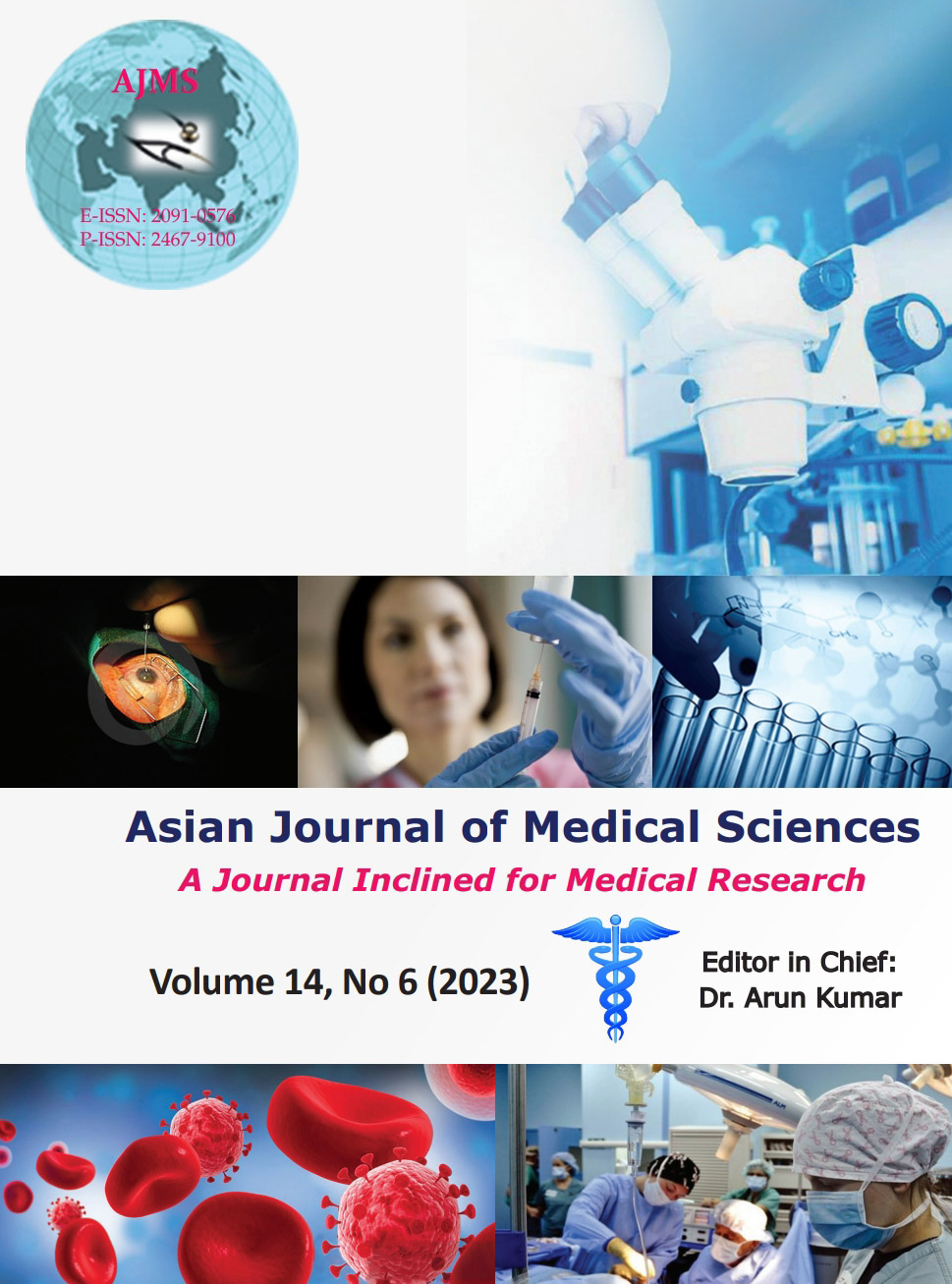A study of the risk factors and outcome in patients with upper gastrointestinal bleed presenting to a tertiary care center in Kumaon region of Uttarakhand
Keywords:
Upper gastrointestinal tract; Anemia; International normalized ratio; Multivariate analysisAbstract
Background: Upper gastrointestinal (GI) bleeding refers to blood loss within the intraluminal GI tract from any location between the upper esophagi to the duodenum at the level of the ligament of Treitz. Bleeding from the upper GI tract may present as hematemesis, melena, hematochezia, occult GI bleeding, and anemia.
Aims and Objectives: The aims of this study were to study the risk factors and outcome in upper GI bleed patients presenting to a tertiary care center in Kumaon region of Uttarakhand. The primary objective was to estimate the proportion of mortality in upper GI bleed patients attending a tertiary care center. The secondary objective was to study the risk factors associated with upper GI bleed and their effect on mortality.
Materials and Methods: This was a hospital-based observational prospective clinical study, carried out in the Department of General medicine, Dr. Susheela Tiwari Memorial Hospital and associated Government Medical College, Haldwani, from January 2020 to September 2021 after obtaining ethical clearance from the Institutional Review Committee and informed consent from the patient or patient relatives. Statistical testing has been conducted with the Statistical Package for the Social Science software (SPSS version 20.0).
Results: The factors associated with mortality using multivariate analysis were high international normalized ratio (INR), low albumin, raised serum glutamic oxaloacetic transaminas, high Child Pugh Score, and high model for end stage liver disease (MELD) score found to be significant.
Conclusion: The mortality rate in our patients was 18% and factors associated with increased mortality were high INR, low Albumin, raised creatinine, high Child Pugh Score, high MELD score, and presence of spontaneous bacterial peritonitis.
Downloads
Downloads
Published
How to Cite
Issue
Section
License
Copyright (c) 2023 Asian Journal of Medical Sciences

This work is licensed under a Creative Commons Attribution-NonCommercial 4.0 International License.
Authors who publish with this journal agree to the following terms:
- The journal holds copyright and publishes the work under a Creative Commons CC-BY-NC license that permits use, distribution and reprduction in any medium, provided the original work is properly cited and is not used for commercial purposes. The journal should be recognised as the original publisher of this work.
- Authors are able to enter into separate, additional contractual arrangements for the non-exclusive distribution of the journal's published version of the work (e.g., post it to an institutional repository or publish it in a book), with an acknowledgement of its initial publication in this journal.
- Authors are permitted and encouraged to post their work online (e.g., in institutional repositories or on their website) prior to and during the submission process, as it can lead to productive exchanges, as well as earlier and greater citation of published work (See The Effect of Open Access).




